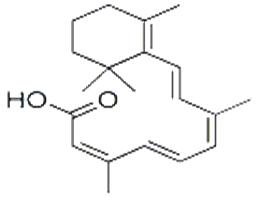
Isotretinoin
| Price | $1 |
| Package | 1KG |
| Min. Order: | 1G |
| Supply Ability: | 100KG |
| Update Time: | 2019-07-06 |
Product Details
| Product Name: Isotretinoin | CAS No.: 4759-48-2 |
| Min. Order: 1G | Purity: 98% |
| Supply Ability: 100KG | Release date: 2019/07/06 |
AD68
| Isotretinoin Basic information |
| Pharmacological effects Physical and Chemical Properties Pharmacokinetics Indications Clinical application Toxicity Drug Interactions Contraindications Side effects Chemical Properties Uses Production methods |
| Product Name: | Isotretinoin |
| Synonyms: | A different diMension acid;Retinoin;13-cis-Retinoic acid, 99% 500MG;Isotretinoin API;(2Z,4E,6E,8E)-3,7-Dimethyl-9-(2,6,6-trimethyl-1-cyclohexen-1-yl)-2,4,6,8-nonatetraenoic Acid Isotretinoin;Isotretinoin (Roaccutane);Isotretinoin-D5/13-cis-Retinoic acid-D5;Roaccutan |
| CAS: | 4759-48-2 |
| MF: | C20H28O2 |
| MW: | 300.44 |
| EINECS: | 225-296-0 |
| Product Categories: | API;BUSPAR;Other APIs;intermediates;Antibiotics;Organic acids;APIs;Intermediates & Fine Chemicals;Pharmaceuticals;Retinoids |
| Mol File: | 4759-48-2.mol |
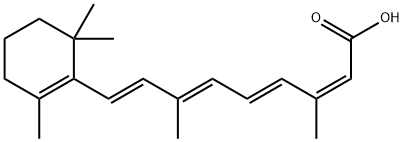 |
|
| Isotretinoin Chemical Properties |
| Melting point | 172-175 °C(lit.) |
| storage temp. | −20°C |
| form | Fine Crystalline Powder |
| color | Yellow-orange to orange |
| Water Solubility | insoluble |
| λmax | 354nm(EtOH)(lit.) |
| Merck | 14,5228 |
| Stability: | Stable, but probably air and light sensitive. Combustible. Incompatible with strong oxidizing agents. |
| CAS DataBase Reference | 4759-48-2(CAS DataBase Reference) |
| EPA Substance Registry System | Retinoic acid, 13-cis-(4759-48-2) |
| Safety Information |
| Hazard Codes | T |
| Risk Statements | 61-36/37/38-20/21/22 |
| Safety Statements | 53-26-36/37/39-45-37/39 |
| WGK Germany | 3 |
| RTECS | VH6440000 |
| TSCA | Yes |
| Hazardous Substances Data | 4759-48-2(Hazardous Substances Data) |
| Toxicity | LD50 (20 day) in mice, rats (mg/kg): 904, 901 i.p.; 3389, >4000 orally (Kamm) |
| Isotretinoin Usage And Synthesis |
| Pharmacological effects | Isotretinoin belongs to the first generation of vitamin A acid. It is a stereoisomer of all-trans vitamin A acid. Oral administration has an anti-oil effect which has special effect on severe acne. The mechanism is as follows: ① it can reduce sebaceous gland and inhibit the activity of sebaceous gland, reducing the effect of secretion of the sebaceous glands, thus inhibiting the growth of Propionibacterium which relies on lipid environment. ② it has an anti-keratosis effect, can inhibit the excess proliferation of epidermal and promote its differentiation. It also reduces the keratosis of hair follicles and the catheter of sebaceous glands. ③ it can also affect the function of lymphocytes and monocytes, and inhibit the chemotaxis of neutrophil, and thus having anti-inflammatory activity. ④ it can exert its therapeutic effect by selectively binding Vitamin A acid nuclear receptors. It can inhibit the proliferation of acne rod bacilli. Moreover it has effects of immunity stimulation at low doses, but has immunity suppression effect at high doses. ⑤ It can inhibit the biogenesis of collagenase and gelatinase in the skin, and can also inhibit the activity of ornithine decarboxylase. Owing to the major role of ornithine decarboxylase in inducing skin mutations, so isotretinoin can also suppress tumorigenesis. ⑥ when subjects to topical administration, it has a similar mechanism of action as vitamin A acid which induces the proliferation of epidermal cell, promotes the differentiation of epidermal cell granular layer into the stratum corneum. It can also regulate the horny plug occurring during some abnormal cornification processes of Hair follicle sebaceous epithelium, and thus playing a therapeutic role.  Figure 1 Structure formula of Isotretinoin The above information is edited by the Chemicalbook of Dai Xiongfeng. |
| Physical and Chemical Properties | Yellow or orange crystalline powder or crystal, insoluble in water, slightly soluble in ethanol, very slightly soluble in ether, soluble in chloroform. |
| Pharmacokinetics | This product is rapidly absorbed after oral administration. The plasma concentration reaches peak within 2 to 4 hours. However, oral administration has a low bioavailability which can be boosted by postprandial medication. It has a over 99% binding rate to the plasma protein. It is mainly metabolized in the liver or intestine wall. It enters into the enterohepatic circulation in the form of prototype and metabolites. Prototype drug without any changes is excreted from the feces while metabolite is excreted from the urine. The half life of elimination lasts 10 to 20 hours. |
| Indications | 1. Isotretinoin should be the primary choice for treatment of refractory acne, especially for severe nodular, cystic, inflammatory acne patients to whom conventional therapy is ineffective. 2. Generalized Plana or verrucous epidermal dysplasia; 3. Skin disease of abnormal cornification; 4. Cutaneous lupus erythematosus; 5. lichen planus, atrophic lichen sclerosis. |
| Clinical application | Isotretinoin is an effective drug against acne. It takes effect on four processes of acne procedures, preventing the formation of acne lesions: ① inhibiting sebaceous secretion; ② inhibit the growth of acne bacillus; ③ inhibiting sebaceous hyperplasia; ④ anti-inflammatory effect. Isotretinoin has no affinity to Vitamin A acid receptors. Its exact mechanism of action is not very clear. Its anti-acne role may be related to that it or its metabolites can inhibit the proliferation and differentiation of sebaceous glands. It may also reduce the volume of the sebaceous glands, reducing the skin's DHT, down-regulate the expression of skin androgen receptor. Other possible mechanism includes reducing the hair follicle keratosis, antibacterial, anti-inflammatory effects and so on. In the 1980s, Isotretinoin is only for treating severe nodular cystic acne. Isotretinoin is now also used for treating some less-seriously acne where those related patients are often insensitive to conventional therapy, especially some patients with long-term use of antibiotics due to that acne bacillus have evolved multiple drug (such as erythromycin, tetracycline) resistance. It may also be used for some acne patients prone to scar. Isotretinoin is usually applied with a relative high dose at the beginning in treatment of acne, such as 1 mg/(kg ? d). However, most patients follow this poorly due to adverse reactions of drugs. It was later found that 0.5 mg/(kg ? d) can also give similar therapeutic effect. In order to achieve the accumulation of appropriate amount, drug usage can be prolonged. The calculation method of accumulation of isotretinoin is using total amount of applied drugs to divide the patient body weight (mg/kg). In general, cumulative dose of 120mg/kg will effectively reduce the possibility of disease relapse. However, the maximum cumulative amount should no exceed 150mg/kg. Owing to the certain residence time of the drug in the body, the symptoms of some patients still keep going well even after stopping taking drugs, Therefore, it is not unnecessary to maintaining therapy until all lesions subsided. About one-third of patients required re-treatment (due to the persistent or recurrent disease). There are two cases of resistance to isotretinoin: closed comedones and small cystic acne. During the first 1 to 2 weeks of treatment, some patients will suffer an increasing skin lesion. Some cystic acne becomes pyogenic granuloma-like lesions. This is due to that taking isotretinoin does harm to the normal skin barrier function, leading to increased colonization of staphylococcus aureus. If some women exhibit resistance to isotretinoin therapy or suffer recurrent disease, we should observe whether hairy happens and menstrual cycle is normal. Also check the ovaries and adrenal function. Both adrenal dysfunction and high expression level of 5α-reductase can cause this issue. |
| Toxicity | (1) Adverse reactions of skin and mucous membranes: This is the most common adverse reaction of orally administration of isotretinoin. The higher dose of oral administration is, the higher the incidences of adverse reactions happen. Cheilitis is the mostly common with a 100% incidence, exhibiting mucosa lips dry, chapped, peeling, bleeding, which is similar to exfoliative dermatitis; Nearly 30% to 50% of patients suffer drying nasal mucosa, bleeding, reversible hair loss, dry and itching skin, dry eye. This happens especially in patients with allergies and xerosis. Those patients who wear contact lenses should not use this drug. Or we should not wear contact lenses during taking it. (2) Teratogenicity: Animal experiments show that oral administration of isotretinoin can cause malformations, miscarriage and stillbirth. Administration during the early phase of fetal organ formation can lead to the abnormal development of the central nervous system and cardiovascular system. Administration in the later phase of pregnancy can cause fetal limb shortage and defect on urinary system. (3) Effect on the bone: Long-term application of isotretinoin can cause bone hypertrophy, tendon ligament calcification, osteoporosis, epiphyseal atresia, thus badly affecting the growth of children and adolescents. Bone hypertrophy and tendon ligament calcification are the most common. The incidence is related to the drug dosage and duration. When treated with 1~2mg dose per day per kilogram of body weight and a4 to 5 months duration of oral isotretinoin, about 10% of patients can be detected for bone hypertrophy. (4) Effect on mental activity: people suffer from acne often mentally more depressed or prone to depression. Taking isotretinoin will boost this tendency. It has been reported since 1982 (when isotretinoin first entered into market) to May 2000, the US Food and Drug Administration (FDA) has reported 431 cases of mental disorders after taking isotretinoin, wherein 37 patients commit suicide, 110 patient got depression or suicidal thoughts or suicide for hospitalized, 284 patients with depression but not hospitalized. Effect of oral administration of isotretinoin on mental activity is related to the duration of the drugs; stopping taking drugs or psychiatric treatment can alleviate the symptoms. However, symptoms can reoccur, and even deteriorate after re-treatment again or worse. (5) Laboratory abnormalities: oral administration of isotretinoin can cause elevated level of triglycerides and cholesterol in serum. |
| Drug Interactions | 1. Combination with warfarin can enhance the latter one’s effect. 2. Combination together with Avi A ester, vitamin A acetate or Vitamin A acid can increase the incidence and severity of adverse reactions. 3. Combination with methotrexate can increase the blood concentration of the latter one, and thus increasing the damage to the liver. 4. Combination with tetracycline can lead to brain and cause pseudo-tumor in brain and cause benigh hypertension. Clinical manifestations of hypertension are accompanied by headache, dizziness and visual disturbances. 5. Combination with carbamazepine results in decreased plasma concentrations of the latter one. 6. Combination with light-sensitive drugs increases the light-sensitive effect. |
| Contraindications | 1. Pregnant women, lactation, patients with severe liver and kidney dysfunction. 2. Take with caution for patients of hyperlipidemia, diabetes, severe osteoporosis. 3. Avoid apply together with vitamin A, tetracycline, aspirin. |
| Side effects | 1. Changed skin and mucous membrane, including cheilitis, dry mouth, facial redness, dry eyes, conjunctivitis, etc; 2. Long-term use can cause liver and kidney damage; 3. Long-term application of Isotretinoin can cause osteoporosis, epiphyseal atresia, and retardation of bone formation. The incidence is <15%; 4. Teratogenic effect is one of the more serious adverse reactions. |
| Chemical Properties | It is orange-red flake crystals obtained from isopropanol, melting point 174~175°C. UV maximal absorption: 354nm (ε39800). Acute toxicity LD50 (20 days) mice, rat (mg/kg): 904,901 intraperitoneal injections; 3389> 4000 oral administration. |
| Uses | Vitamin A class drugs. It can rapidly and strongly inhibit the cell proliferation and differentiation process of skin glands cells. It has a high effect on severe nodular cystic acne. This product has a high gastrointestinal absorption, but invalid for topical administration. It is used for treating severe acnes which cannot be treated by other drugs. It also has some effects on treating cystic acne, the party of acne, rosacea, ichthyosis, follicular keratosis and pityriasis red hair and other skin diseases. |
| Production methods | β-ionone and ethyl chloride are first reacted together after which the product is further reacted with triphenylphosphine to obtain Triphenyl salt. The Triphenyl salt is further reacted with cyclopentenone derivative to produce isotretinoin and its 8Z isomer. Separate out the 8Z isomer and convert it to isotretinoin through isomerization with the help of nitric acid. |
| Chemical Properties | Yellow-Orange Crystalline Powder |
| Uses | 5HT1a receptor agonist, anxiolytic |
| Uses | Used as a treatment for severe acne. Presently being studied in conjuction with the treatment of photoaged skin. |
| Definition | ChEBI: A retinoic acid that is all-trans-retinoic acid in which the double bond which is alpha,beta- to the carboxy group is isomerised to Z configuration. A synthetic retinoid, it is used for th treatment of severe cases of acne and other skin diseases. |
| General Description | Yellow-orange to orange crystalline powder; orange-brown chunky solid. |
| Air & Water Reactions | Insoluble in water. |
| Reactivity Profile | An organic acid and unsaturated aliphatic hydrocarbon. Carboxylic acids donate hydrogen ions if a base is present to accept them. They react in this way with all bases, both organic (for example, the amines) and inorganic. Their reactions with bases, called "neutralizations", are accompanied by the evolution of substantial amounts of heat. Neutralization between an acid and a base produces water plus a salt. Insoluble carboxylic acids react with solutions of cyanides to cause the release of gaseous hydrogen cyanide. Flammable and/or toxic gases and heat are generated by the reaction of carboxylic acids with diazo compounds, dithiocarbamates, isocyanates, mercaptans, nitrides, and sulfides. Carboxylic acids, especially in aqueous solution, also react with sulfites, nitrites, thiosulfates (to give H2S and SO3), dithionites (SO2), to generate flammable and/or toxic gases and heat. Their reaction with carbonates and bicarbonates generates a harmless gas (carbon dioxide) but still heat. Like other organic compounds, carboxylic acids can be oxidized by strong oxidizing agents and reduced by strong reducing agents. These reactions generate heat. A wide variety of products is possible. Like other acids, carboxylic acids may initiate polymerization reactions; like other acids, they often catalyze (increase the rate of) chemical reactions. |
| Fire Hazard | Flash point data for Isotretinoin are not available; however, Isotretinoin is probably combustible. |
Company Profile Introduction
Established in 2014,Career Henan Chemical Co. is a manufacturerspecializing in the sale of fine chemicals.
Mainly deals in the sales of:
Pharmaceutical intermediates
OLED intermediates:
Pharmaceutical intermediates;
OLED intermediates;
You may like
Recommended supplier
| Product name | Price | Suppliers | Update time | |
|---|---|---|---|---|
| $120.00/1kg |
VIP1Y
|
Hebei Zhuanglai Chemical Trading Co.,Ltd
|
2024-05-16 | |
| $25.00/1box |
VIP1Y
|
Shanghai Getian Industrial Co., LTD
|
2024-04-29 | |
| $35.00/1kg |
VIP1Y
|
Sigma Audley
|
2024-03-15 | |
| $30.00/1Box |
VIP1Y
|
zhuzhou dingcheng meihei comestic co.,ltd
|
2023-12-05 | |
| $0.00/25KG |
VIP5Y
|
Hebei Mojin Biotechnology Co., Ltd
|
2023-09-06 | |
| $0.00/1kg |
VIP2Y
|
Wuhan Haorong Biotechnology Co.,Ltd
|
2023-07-20 | |
| $200.00/1kg |
Henan Bao Enluo International TradeCo.,LTD
|
2023-06-20 | ||
| $1.00/1g |
VIP2Y
|
Wuhan Cell Pharmaceutical Co., Ltd
|
2023-05-23 | |
| $5.00/1g |
Hebei Endun Biological Technology Co. LTD
|
2023-03-15 | ||
| $660.00/100kilograms |
VIP3Y
|
Hebei Dangtong Import and export Co LTD
|
2023-02-15 |
- Since: 2014-12-17
- Address: No.967,15th Floor,Unit 7, Building 1, No.70 of DianChang Road, High-tech Development Zone, Zhengzho
INQUIRY
杨俊青
sales@coreychem.com
sales@coreychem.com




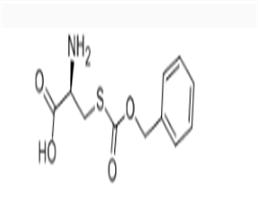
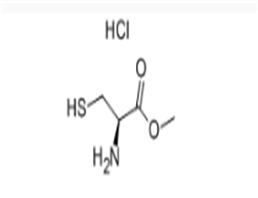
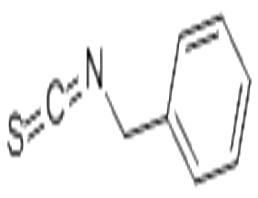

 China
China